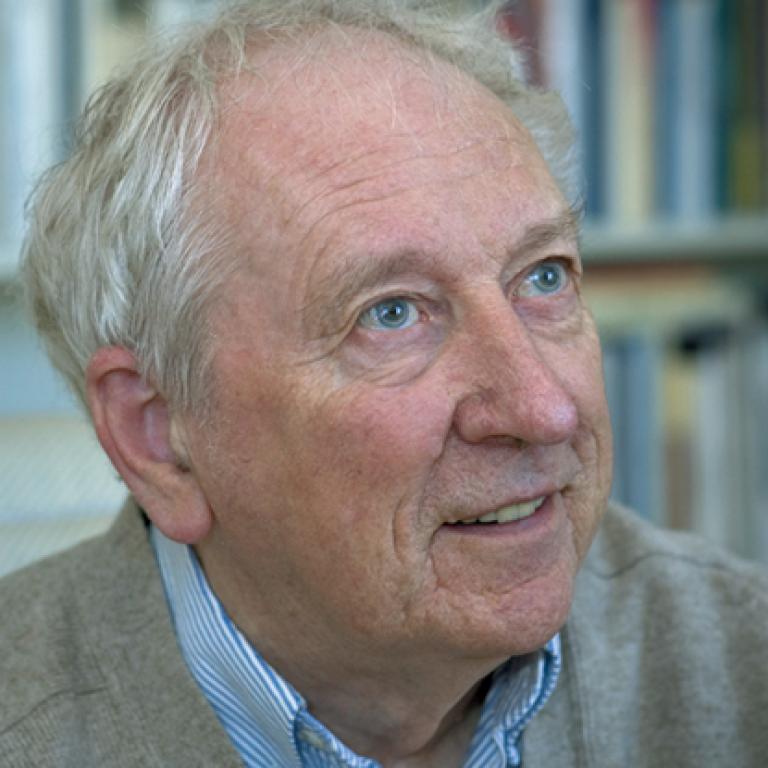
Tomas Tranströmer (1931-2015) was awarded the Nobel Prize in Literature in 2011.
He was born in Stockholm, where he grew up, but spent many long summers on the island of Runmarö in the nearby archipelago, evoking that landscape in his early work, which draws on the aesthetic tradition of Swedish nature poetry. His later poetry is more personal, open and relaxed, often reflecting his broad interests: travel, music, painting, archaeology and natural sciences.
He was Scandinavia’s best-known and most influential contemporary poet. His books sell thousands of copies in Sweden, and his work has been translated into over 50 languages, with substantial or complete editions of his work published in over 20 languages.
Tranströmer started writing poetry while at the oppressive Södra Latin Grammar School (its atmosphere caught by Ingmar Bergman in Alf Sjöberg’s Frenzy, which was filmed there, the young Tomas amongst the pupils). But he was devouring books on all subjects, especially geography, with daily visits to the local library, where he worked his way through most of the non-fiction shelves. However, this bookish adolescence was shadowed by the war, by his parents’ divorce and the absence of his father, and at 15 he experienced a winter of psychological crisis. He published his first collection, 17 Poems, in 1954, at the age of 23.
After studying psychology at the University of Stockholm, he worked at its Psychotechnological Institute, and in 1960 became a psychologist at Roxtuna, a young offenders institution. From the mid-1960s he divided his time between his writing and his work as a psychologist, and in 1965 moved with his family to Västerås, where he spent the rest of his working life. In 1990, a year after the publication of his tenth book of poems, Tranströmer suffered a stroke, which deprived him of most of his speech and partly inhibited movement on his right-hand side. Swedish composers have since written several left-hand piano pieces especially for him to play.
After his stroke, he published a short book of 'autobiographical chapters', Memories Look at Me (1993) and a new collection, The Sad Gondola (1996), both included in Robin Fulton’s translation of his Bloodaxe New Collected Poems (1997). In 2004 he published The Great Enigma, a slim volume containing five short poems and a group of 45 even smaller haiku-type poems. These were added to the New Collected Poems to form Tranströmer’s first collected edition to appear in the States, licensed by Bloodaxe Books to New Directions in 2006 under the title The Great Enigma: New Collected Poems. That edition was published by Bloodaxe Books in the UK as the latest revised and expanded edition of New Collected Poems in 2010.
Tranströmer also translated other poets into Swedish, including Robert Bly and Hungary’s János Pilinszky. Before winning the Nobel Prize in Literature in 2011, he had won many other international awards for his poetry, including the Neustadt International Prize for Literature in the US, the Bonner Award for Poetry, Germany’s Petrarch Prize, the Bellman Prize, the Swedish Academy’s Nordic Prize, and the August Prize. In 1997 the city of Västerås established a special Tranströmer Prize. In 2007, he received a special Lifetime Recognition Award given by the trustees of the Griffin Trust for Excellence in Poetry, which also awards the annual Griffin Poetry Prize.
His correspondence with Robert Bly was published in Sweden in 2001, and in 2013 an English translation, Airmail: The Letters of Robert Bly and Tomas Tranströmer, was published by Bloodaxe Books in the UK and by Graywolf Press in the US.
Tomas Tranströmer feature on Bloodaxe Blogs